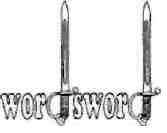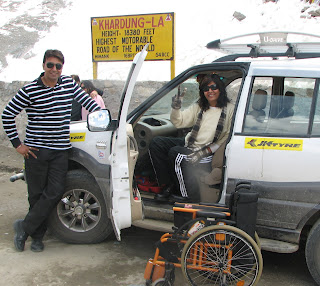(The Asian Age 4 Jan 12)
Anil Bhat
Taking stock of India’s
policies, responses on various national security issues over 2011 from Raisina
Hill and the situation on the ground and on the high seas, there is
little to cheer about.
Jammu and
Kashmir (J&K) The attack on the
state’s Law and Parliamentary Affairs minister Ali Mohammad Sagar by
Pakistani terrorists following earlier ones only underscores what Defence
Minister A. K. Antony quoted recently, said "Even though violence levels
have reduced substantially, attempts at infiltration are still persisting... We
can't ignore the threat". Chief Minister Omar Abdullah has been
campaigning for demilitarization and removal of the Armed Forces Special Powers
Act (AFSPA) from some parts of the state, which reportedly the Union Home
Ministry supports. Mr. Abdullah has also mooted the raising of 50 police
battalions to replace Army and para-military forces in the Valley.
While GOC 15
Corps Lt Gen Ata Hasnain categorically said that Pakistan will stoke more
trouble in Kashmir once US-led forces exit Afghanistan, intelligence inputs
received by various Army formations in J& K appear to suggest that infiltration
is on the rise after the State Government's move for a partial withdrawal of
AFSPA. Mr Antony stated in Parliament on December 07, 2011 that as per the
assessment of the Multi Agency Centre (MAC), 68 militants attempted to
infiltrate across the Line of Control (LoC) during September and October 2011,
as compared to 85 such attempts during the corresponding period in 2010. 12
terrorists were killed and one terrorist apprehended by Army in 2011, while
trying to infiltrate in J&K.
During this period 5 Army personnel were
killed and 8 were wounded during conduct of anti-infiltration operations along
the LoC. He further stated that it was owing to the Army’s “robust
counter-infiltration strategy” involving troop deployment and use of
surveillance and monitoring devices and the LoC fence that have enhanced the
ability to detect and intercept terrorists attempting to infiltrate/exfiltrate.
This is just as well, because as brought out by this daily, painstaking
investigation by Indian Intelligence agencies has revealed founder of Lashkar e
Taiyyaba (LeT, renamed Jamaat ud Dawa) Hafiz Saeed’s latest plans for a winter
offensive not only in J&K, but also in important Indian cities during
assembly elections. Heavy snow on mountain passes during winter has been
deterring infiltration attempts across the LoC by Pakistani terrorists. Saeed
has been exhorting LeT operatives at Muridke, Lahore and Peshawar Cantonment to
mobilize terrorists specially trained to operate in heavy snow in order to
ensure their induction during winter months. In view of all these
factors, New Delhi must have no doubts or contradictions on national security.
Pakistan While talks, albeit inconclusive during the recent round,
will continue, despite Pak army’s continued active support of groups like LeT
and some others for anti-India operations, the National Intelligence Agency
(NIA) on December 24 filed charge sheets against nine persons, including two
serving Inter-Services Intelligence (ISI) officers- Major Iqbal and Major Samir
Ali - as well as Pakistani-American LeT operative Daood Gilani aka David
Coleman Headley and Hafiz Saeed, for the 26/11 attacks in India. This is the
first time India has framed terror charges against serving officers of
Pakistan's Army for terror attacks in India. National Investigation Agency
(NIA) has prepared a 'Terror Funding Template' (TFT), which will help its
officials and investigators of states' anti-terror agencies to extract
information on terror funding. The TFT has been circulated to all states and
Union Territories for getting relevant information from terrorists and terror
suspects during their interrogation and probe. Islamabad has formally conveyed
to India that its nine-member judicial commission will visit here in January to
interview key persons linked to the probe into the 2008 Mumbai terror attacks.
North East Nothing was done about Manipur’s main highways
again being blockaded for months on end this year. The Centre has been having
talks with the Issac- muivah faction of National Socialist Council of
Nagaland/Nagalim, (NSCN- IM) since 1997 and with United Liberation Front of
Asom (ULFA) since this year. On NSCN talks, a leading local daily of Manipur
reported: “Like in 1949 when the Congress party conspired and usurped the
sovereignty of Manipur, it is now plotting to disintegrate Manipur” by agreeing
to its own flag and “a supra state body ….encompass Nagas of Manipur, Assam and
Arunachal Pradesh is tantamount to establishing a separate administration for
Nagas outside the jurisprudence of these three States”.
On ULFA, the
Centre has begun talks with a faction formed of terrorists handed over by
Bangladesh, who Assam Chief Minister bailed out of jail to help him win
elections for the third time and some of who are reported to be clandestinely
still involved with Paresh Baruah’s anti-talks group hiding in Burma and
indulging in attacks, extortion and abductions in Assam and Arunachal
Pradesh, where the Army busted some camps of the outfit. Meanwhile
the tie-up between Naxal-Maoists with the aforementioned terrorist groups
and some more of Manipur, all involved in training and supplying them
weapons from China, has been growing, with the late Kishenji having visited
Assam for coordination, just before he was killed. Much more needs to be done
by Assam government on both counts.
Burma India ’s ongoing cooperation with Burma/ Myanmar has been
disproportionate, in that the latter has requested for and received many
categories of military hardware and equipment, but assurance of its territory
not being allowed to be used for insurgent activities against India has never
been effective. Elements of United National Liberation Front, People's
Liberation Army - the armed wing of the Revolutionary People's Front, the
warring factions of the NSCN-IM and NSCN-K ( Khaplang) the ULFA have maintained
tactical bases in Myanmar . Following Myanmar Army’s recent operation against
Indian insurgent-terrorist groups hiding in the Taga region, media cited home
ministry sources saying that it was an eyewash conducted a week after it
tipped-off Indian insurgent-terrorist leaders.
China The press release issued following the recent 4th
India-China Annual Defence Dialogue conducted on November 09, 2011 in the
Defence Ministry, New Delhi stated: “it was conducted in an atmosphere of
cordiality and both sides were frank and constructive in their approach during
the deliberations…. It was noted that existing confidence building measures on
the Line of Actual Control (LAC) between both countries were successful in
maintaining peace and tranquility on the borders. It was decided that such
measures would continue to be implemented. Both sides agreed that the process
of dialogue and communication should be strengthened at various levels to
ensure stability in the border areas. Both sides agreed that the provisions of
the 2005 Protocol for implementation of CBMs on the LAC should be strictly
adhered to by both sides so that peace and tranquility is maintained in the
border areas. It was also noted that the strengthening of the institutional
mechanism for border discussions, which is expected to be operationalised soon
through the establishment of a working level mechanism, would improve
communications on important border related issues”.
Whereas, since the fierce
confrontation at Nathu La in 1967, no bullets have been fired, the People's
Liberation Army (PLA) has kept the 4,057-km LAC live with incursions. Three
sectors of the LAC are western (Ladakh), middle (Uttarakhand, Himachal) and
eastern (Sikkim, Arunachal), Arunachal. While incursions in Aunachal
Pradesh and Sikkim were considered routine, the ones in Jammu and Kashmir’s
(J&K) Ladakh region since 2009, particularly when seen in the light of
decades old anti-India based Sino – Pak relationship and joint military
exercises, like Stride 2009, conducted in China’s northwest Ningxia Hui
Autonomous Region, at an unprecedented level of 50,000 troops and aiming to
test its long-distance mobility, is certainly a cause for concern. Chinese
incursions have involved violations of air space, air dropping of expired
tinned food, painting of rocks etc.
Another major cause of worry is
construction of airfields, roads, railway lines and strategic link up of
Kashghar, in Pakistan with Havelian in Pakistan Occupied Kashmir (POK) and
ultimtely with Tibet’s Medong region bordering Arunachal. Also worrying are
China’s efforts to bolster surveillance capability by constructing border
out posts (BOPs), which at places, can also be used for directing
precision guided munitions (tv guided cruise missiles, terrain guided missiles
eg- KH59 mk II, which has a range of over 1200 kms )- all of which have the
potential to substantially alter the strategic balance in favour of China.
According to a September 29, 2011
media report, a secret note to the ministry of external affairs revealed that
the PLA troops of have been violating the LAC at will, with as many as 50
incursions in three months, some as much as 7 kms inside Indian territory in
J&K. Some instances are: (a) On September 16, 2011, there was a face-off at
the Demchok post when the Chinese came close to Indian patrol. The Indians
disengaged and performed a banner drill, but the Chinese did not withdraw. (b)
On September 9 about a dozen PLA soldiers reached Barahoti in the middle
sector on horseback. Later a Chinese PLA vehicle came to the Tunjun La area and
erected some antennas 4.5 km deep inside the Indian territory. (c) On
September 2, there was face-off at the Thakung post on the Sino-Indian boundary
in the western sector of J&K. (d) On August 22, four Chinese boats carrying
PLA personnel entered 5.5 km deep into the Indian territory in the Pangong Tso
area. (e) On August 19, an Indian patrol, had a face-off with the PLA in
Pangong Tso area. (f) On August 16, 48 PLA personnel intruded 7 km into the
Indian territory.
For a change New Delhi is being
assertive y questioning its claims on the South China Sea, forging strategic
ties with Vietnam, Japan and Australia and not reacting to China’s objections
on Dalai Lama’s presence at the Tibetan conclave.
Naxal-Maoist terrorism, there is some progress but much more needs to be done by
all the affected states in coordination with the Centre. Long pending police
reforms urgently need to be implemented with special stress on recruitment to
greatly increase policeman to population ratio and proper
counter-terrorism training.
Coastal security While Indian Navy and Indian Coast Guard have been working
closely with various government agencies of coastal states for establishing a
synergised mechanism in accordance with the Cabinet Committee on Security’s
directives issued in February 2009, only some progress has been made and
interim Standard Operating Procedures promulgated for joint patrolling in territorial
waters and revalidated regularly through conduct of security exercises like
Sagar Kavach.
The disconnect between Ministries
of Defence and Home and External Affairs must be rectified. Some other
ministries must also be included effectively. Military and internal
security acquisitions need to be expedited.





